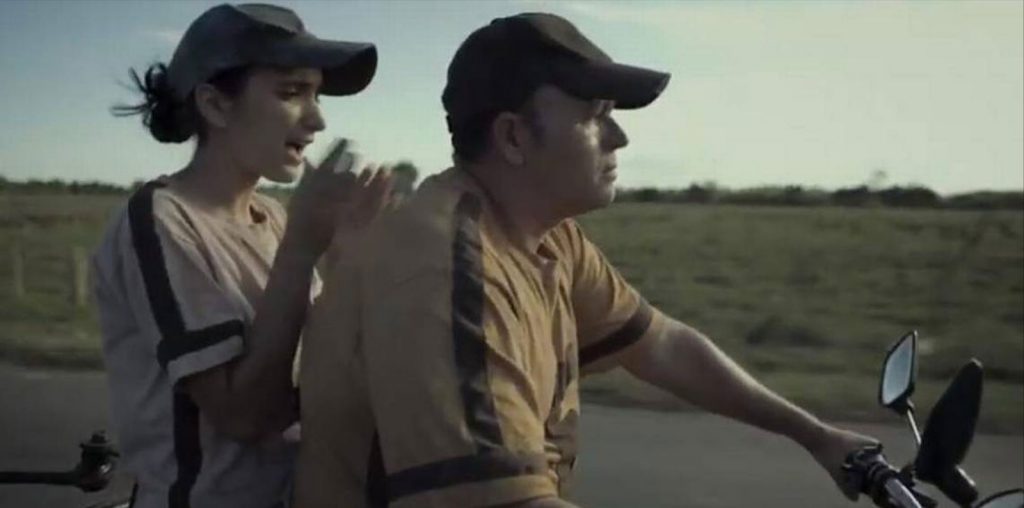
This budgetless handheld documentary details the daily process in a tiny New Jersey slaughterhouse. It sounds like an instant winner, and “On the Killing Floor” does contain a good deal of memorable, disturbing imagery. It’s a shame that this movie is pretty much ruined by disorganization.
There’s a reason Dante chose to lead his audience into Hell by easy stages, rather than diving right down to the lowest depths, which, of course, were and are the most interesting parts. He understood that the audience craving a tour of hell will be most pleased and engaged by a tour structured as such, with a methodical build to it. It’s a question of good narrative form. Carny barkers, arranging their most disturbing pickled freaks behind a second curtain a second nickel allowed you around, understood and operated by the same principle.
Goeke unfortunately does not. He drops us right into the middle of the most frightful charnelhouse carnage, then pulls back to walk around the outside of the building, then takes us with a jolt back into the chamber of horrors, then deals us fragmentary interviews with employees and customers… etcetera. This never settles into a perceptible pattern. One jarring transition follows another, over and over. (Titles which divide the film spatially, “I. Beef” “II. Poultry” and so on, are just lies – the narrative tightens up right after a title and then relaxes almost immediately back into an aimless meander.)
None of the human subjects are asked, onscreen, any real or searching questions about themselves and their relationship to the business. Anything interesting or insightful they might have said didn’t make it into the finished film, which reduces virtually all of its subjects’ verbal commentary to polite comments regarding the quality of the meat this place produces. None of the people we see killing animals are developed into real “characters;” they are allowed to remain ciphers, and they fade, indistinguishable, into the blood-spattered background, serving no more purpose or function in the picture than their hapless, voiceless victims, whose suffering Goeke’s camera records, without articulating. Eventually we are told that this slaughterhouse allows customers to pick out a specific live animal, which is then immediately done in and carved up according to the customer’s specifications; this revelation enlightens everything we’ve already seen, a little too late, as it arrives, exactly as I’ve placed it here, more than halfway through. We aren’t even granted a geographical understanding of the slaughterhouse floor plan; I watched close, and never got a grip on how many buildings comprise the operation, or how many guys work there, or who’s in charge.
However, I must say that although this movie never bothers to clothe itself in formal coherence, it does (almost) adequately distract us from this egregious shortcoming with a striking array of mondo grotesqueries. The eye of this camera is essentially mindless and prurient; it never offers us real perspective on the things it insists we see. Nevertheless the unflinching viewer will still be able to conclude that even in a small operation, where cruelty to the product should be minimizable, moments of neglectful viciousness creep through with appalling regularity, because it is in the nature of the work that those who perform it must become callous. This conclusion is, of course, not without value, even if the filmmakers haven’t done their job right and led me straight to it. Those who enjoy sick humor will also find that moments here answer to their sensibilities; for instance, the way the classic rock playing on the radio in the facilities sometimes underlines the action. No one who’s seen this will ever forget the spectacle of a butcher gutting a pig carcass hanging upside down on a hook to the tune of Another Brick in the Wall by Pink Floyd. (Part 2, of course. ‘We don’t need no education…’)
Unfortunately, its virtually thorough disregard for structure and meaning ultimately reduces this unique document to a catalog of carnality more suited in the role of a deathporn tape than an arthouse documentary, and frankly, we, and this subject matter, need the latter more than the former. Pacing problems intrinsic to a movie which lacks drive along with focus make an hour of screen time seem like three, and render a fistful of footage which should be incessantly entertaining a soporific bore. There may well be a better movie buried in Goeke’s potent raw footage, but chances are we’ll never see it, because the footage is exciting enough, even largely unadorned by cinematic proprieties, to satisfy just about anyone who might show an interest in it.

